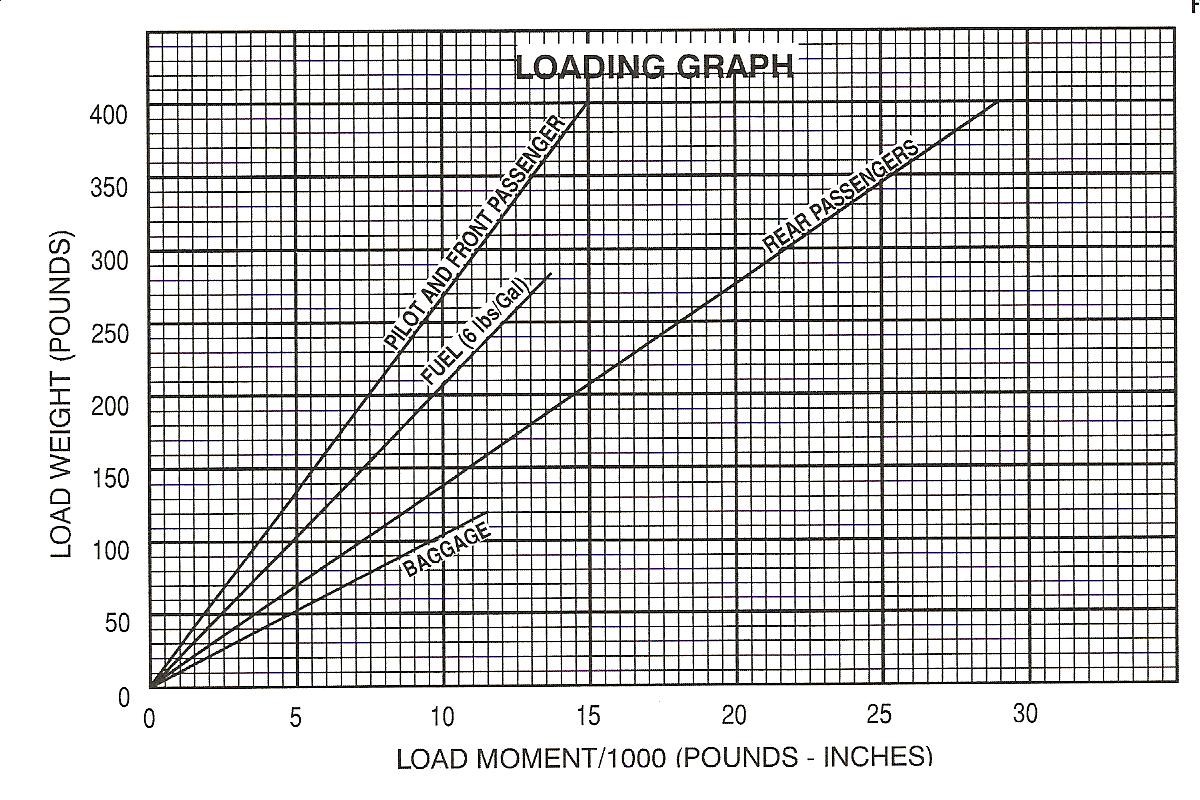GreatLakesFlying
Pre-takeoff checklist
This is something that has been on my mind since I was preparing for my PPL written knowledge test (not too long ago). The loading graph for the Cessna 172 (attached below) that correlates weight and moment, shows front seat loads for up to 400 lbs. The y-axis itself ends at 450 lbs.
Does that mean that you may not have more than 400 lbs on the front seat? I would think that as long as the total aircraft weight is within limits and the CG is also within specs, there should be no problem for the front seat.
For example, for a Cessna 172P, 500 lbs on the front seat, 40 gallons of fuel, and no other passengers or baggage, the W&B calculations show the aircraft within the normal category of the CG/Moment Envelope (POH p. 6-13) and also within the normal category of the CG limits (POH p. 6-14).
In fact, you can have up to ~ 600 lbs on the front seat and 40 gallons in the tanks, and still remain within the normal category for the CG/Moment Envelope and CG Limits -- based on the 172P POH.
So, why does the pilot and front passenger loading graph end at 400 lbs, in the POH? From an engineering/math point-of-view, the end of the plot means that there is no further information. But as the W&B example above shows, we can fly the 172P with 600 lbs of load on the front seat.
I understand that such load may not be a likely scenario but I am curious about the rationale of ending the plot at 400 lbs and the y-axis at 450 lbs in the POH when the actual maximum -- albeit theoretical -- limit seems to be 600 lbs for the front seats.

Does that mean that you may not have more than 400 lbs on the front seat? I would think that as long as the total aircraft weight is within limits and the CG is also within specs, there should be no problem for the front seat.
For example, for a Cessna 172P, 500 lbs on the front seat, 40 gallons of fuel, and no other passengers or baggage, the W&B calculations show the aircraft within the normal category of the CG/Moment Envelope (POH p. 6-13) and also within the normal category of the CG limits (POH p. 6-14).
In fact, you can have up to ~ 600 lbs on the front seat and 40 gallons in the tanks, and still remain within the normal category for the CG/Moment Envelope and CG Limits -- based on the 172P POH.
So, why does the pilot and front passenger loading graph end at 400 lbs, in the POH? From an engineering/math point-of-view, the end of the plot means that there is no further information. But as the W&B example above shows, we can fly the 172P with 600 lbs of load on the front seat.
I understand that such load may not be a likely scenario but I am curious about the rationale of ending the plot at 400 lbs and the y-axis at 450 lbs in the POH when the actual maximum -- albeit theoretical -- limit seems to be 600 lbs for the front seats.

Last edited:



